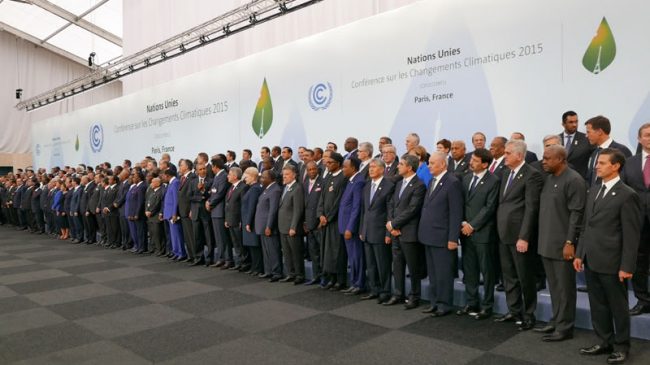On December 12, 2015, government officials from 195 nations meeting in Paris, France, finalized a new agreement on climate change. This brief assesses the merits of the Paris Agreement in order to encourage informed debate about its ratification by signatory nations. It examines the nature and extent of the threat posed by climate change, the effectiveness of solutions adopted in Paris, and considers other, better solutions.
The brief begins with a concise history of the emergence of concern over climate change. This is followed by a status report on, first, the science of climate change and, second, economic analyses of the problem of climate change. It then assesses the Paris Agreement in light of the scientific and economic evidence. Finally, it explores some other policy options that would better address the problem of climate change.
The Paris Agreement seeks to limit the increase in global mean temperatures to “well below 2°C above pre- industrial levels.” The Agreement asserts that this goal is undertaken in order to enhance the implementation of the objective of the UN Framework Convention on Climate Change (FCCC), which is to prevent “dangerous anthropogenic interference with the climate system.”
There is considerable disagreement over what increase in global mean temperature might be considered “dangerous.” For example, economic analyses suggest that warming of 3°C above pre-industrial levels may generate net benefits. In the very scenarios in which climate change is presumed to be greatest, its impact will be distributed most evenly and the harms will be most readily mitigated by adaptive responses. Merely asserting that an increase of 2°C above pre-industrial levels will be “dangerous” does not make it so.
Recent analysis indicates that the sensitivity of the climate to rising levels of carbon dioxide is lower than previously assumed. This is consistent with the finding that forecasts of warming by the Intergovernmental Panel on Climate Change have substantially over-estimated the likely extent of warming. If these new analyses of sensitivity are correct, average global temperatures might rise to less than 2°C above preindustrial levels without any restrictions on greenhouse gas emissions.
Regardless of whether the new analyses of climate sensitivity are correct or not, the voluntary commitments to reduce emissions made by governments in their Intended Nationally Determined Contributions (INDCs) would have little impact on the rate of warming.
Thus, the Paris Agreement likely does not enhance the objective of the FCCC, either because the 2°C target is not desirable, or because restrictions on greenhouse gas emissions are not necessary (or, if necessary, not sufficient) to achieve that target. As such, the Paris Agreement must be considered a new and separate treaty. Indeed, it implicitly acknowledges its status as a separate treaty, noting that it will only enter into force once it has been ratified by signatories representing 55% or more of global greenhouse gas emissions.
Innovation and associated economic development will likely be the most effective means by which humans address climate change. But the commitments made under the Paris Agreement would divert trillions of dollars into low-carbon technologies and government-funded schemes for mitigation and adaptation, thereby undermining the bottom-up processes that drive more widespread innovation and, as a result, impeding the ability of people to adapt to climate change and other threats.
Given the potential for the Paris Agreement to result in harmful and even counterproductive restrictions on economic activity, it would appear that ratification is not in the interests of the majority of signatory nations.

